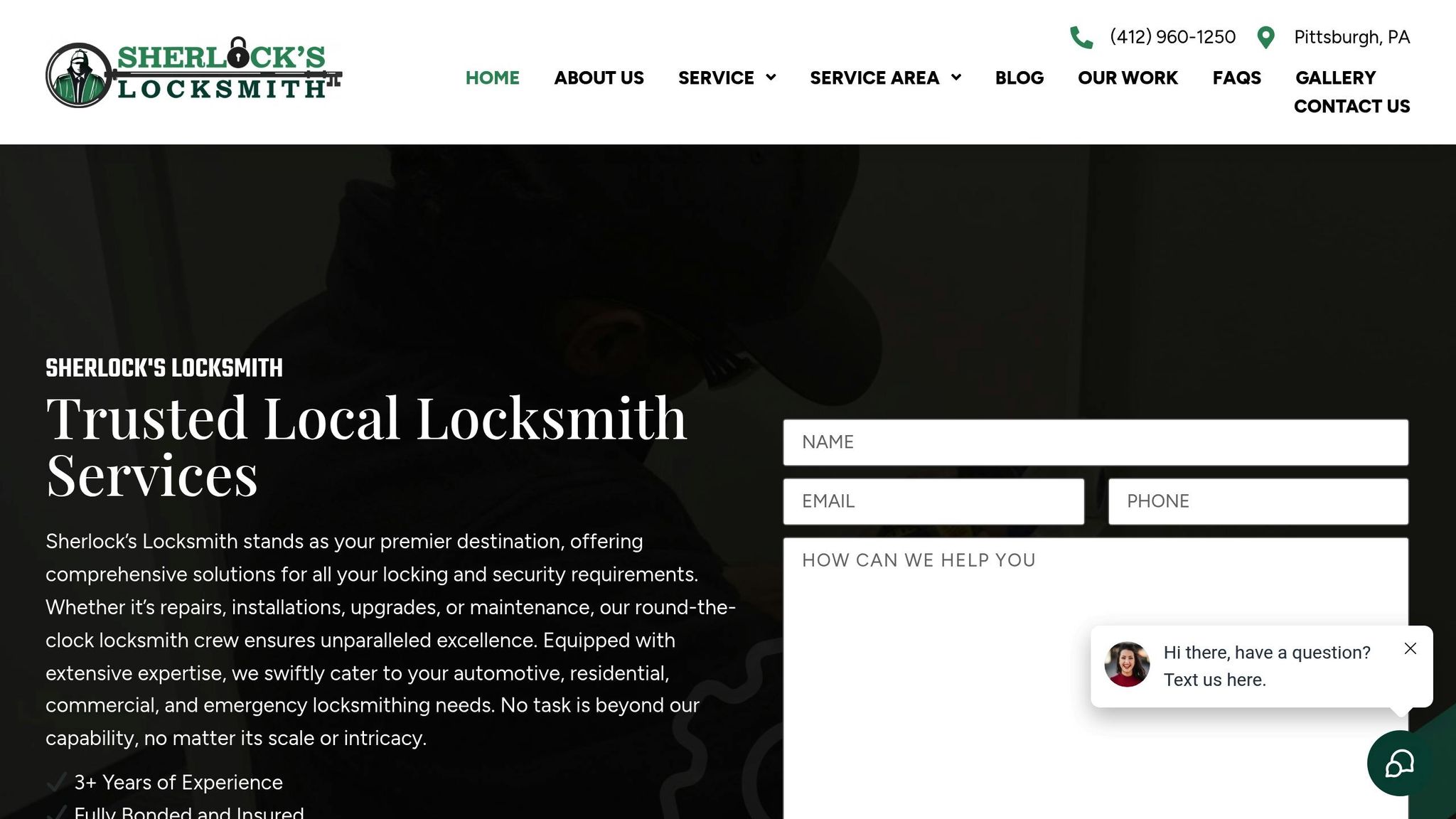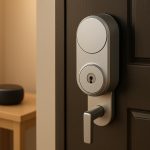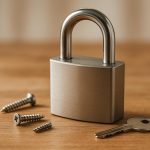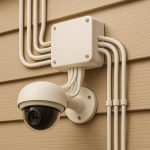Your security system needs consistent care to function reliably. Maintenance logs are a simple yet powerful way to track every service, repair, and check-up your system undergoes. Here’s why they’re indispensable:
- Prevent Failures: Logs help identify issues early, avoiding problems like dead batteries or outdated software that can leave your property exposed.
- Save Money: Regular upkeep prevents costly emergency repairs and reduces false alarms, which can lead to fines.
- Support Insurance Claims: Without proof of maintenance, insurance providers may deny claims or reduce payouts.
- Ensure Compliance: Logs demonstrate adherence to legal and regulatory standards, protecting businesses from liability.
- Plan Ahead: Detailed records reveal patterns, helping you schedule maintenance proactively and budget more effectively.
Maintenance logs aren’t just paperwork. They’re a tool to keep your system reliable, extend its lifespan, and avoid unnecessary costs. Consistent, detailed records make all the difference in maintaining security and peace of mind.
Problems Caused by Poor Maintenance Record Keeping
Skipping proper maintenance logs can make diagnosing issues and securing warranty claims a real headache.
Trouble Diagnosing Issues and Securing Warranty Claims
Keeping accurate maintenance records helps track performance issues and provides valuable insights for targeted repairs. Logs also identify recurring problems and help decode error messages, saving significant time during troubleshooting.
When detailed records are missing, diagnosing problems becomes harder, and warranty claims may face delays or even rejection. This highlights just how important it is to maintain thorough and up-to-date logs.
Benefits of Keeping Detailed Maintenance Records
Detailed maintenance logs do more than just track repairs – they transform security management from reactive problem-solving into proactive system care. For businesses and property owners, the value of these records goes well beyond simple documentation.
Meeting Legal and Regulatory Standards
Maintenance records provide critical legal proof when compliance is under scrutiny. Many industries operate under strict regulations requiring evidence of regular security system upkeep. For example, healthcare facilities must adhere to HIPAA security standards, while financial institutions need to follow banking regulations that enforce proper security protocols.
When auditors or insurance investigators review your security practices, having well-maintained logs demonstrates due diligence. These records confirm that systems are regularly inspected and maintained to ensure reliability and security. Without this documentation, even thorough maintenance efforts can be hard to validate during legal reviews or insurance claims.
Additionally, detailed records can shield businesses from liability. In the event of a security breach, logs showing consistent maintenance and timely repairs can demonstrate responsible management, potentially reducing legal exposure. This kind of documentation also lays the groundwork for better planning of future maintenance.
Planning Maintenance Before Problems Occur
Consistently tracking maintenance activities helps uncover patterns over time. Logs can highlight recurring issues, seasonal trends, and replacement needs, allowing you to plan ahead. This means you can order parts in advance and schedule maintenance during less disruptive times, rather than scrambling to fix unexpected failures.
For instance, these records can identify early warning signs, like a gradual drop in battery backup performance, enabling you to address issues before they become critical. This proactive approach minimizes the chance of sudden breakdowns.
Moreover, detailed logs make budgeting easier. By analyzing past maintenance trends, you can predict costs for component replacements and negotiate better terms with service providers for scheduled maintenance contracts. This approach also helps avoid the higher costs associated with emergency repairs.
Making Systems Last Longer and Work Better
Regular maintenance, guided by detailed records, can significantly extend the life of your security equipment and improve its performance. Routine cleaning and calibration, for example, ensure that cameras operate reliably, while regular checks on access control systems keep both hardware and software running smoothly.
Maintenance logs also help technicians tailor care to the specific needs of each system component. A camera near a loading dock might need more frequent cleaning due to dust exposure, while indoor units may require less frequent attention. These tailored strategies help optimize system performance.
Additionally, keeping thorough records can prove compliance with warranty requirements, potentially saving money on repairs or replacements. Over time, analyzing trends in these logs can reveal opportunities for fine-tuning. For example, you might discover that certain settings work better in different seasons or that specific maintenance routines boost efficiency.
In short, maintenance logs aren’t just about keeping records – they’re a powerful tool for improving system reliability, reducing costs, and ensuring long-term performance.
What to Include in Maintenance Logs
Keeping detailed maintenance logs is crucial for ensuring system reliability and meeting compliance standards. The difference between a well-maintained log and a poor one often comes down to how complete and consistent the records are. When systems fail or audits arise, having thorough documentation can save you from unnecessary headaches.
Key Details to Record
Every maintenance log entry should begin with basic identification details. Start with the date (MM/DD/YYYY format) and time (12-hour clock, e.g., 2:30 PM). Include the technician’s full name, certification number, and contact information. This not only ensures accountability but also makes it easier to follow up on specific tasks.
Documenting system information is equally important. Record equipment model numbers, serial numbers, and exact locations. For instance, a camera system entry might read: "Hikvision DS-2CD2385FWD-I, Serial #12345678, Loading Dock Camera 3." For access control systems, include software versions and any firmware updates applied during the session.
The work performed section should provide detailed descriptions. Instead of vague notes like "checked system", write something specific: "Cleaned camera lens, adjusted focus, tested night vision mode, and verified motion detection zones." If calibration settings were adjusted, include those changes, such as sensitivity levels or detection ranges. For door locks, note tasks like lubrication of mechanisms, testing of keys, or adjustments to strike plates.
When it comes to parts and materials, be thorough. List every component replaced, including part numbers, quantities, and costs. Also, document what happened to old parts. For example: "Replaced backup battery, Model UB1280, $24.50; old battery recycled per company policy." Such details are invaluable for warranty claims and future orders.
Performance data should capture measurable outcomes. Record before-and-after metrics like battery voltage, signal strength, error codes, and response times. For access control systems, note the number of successful card reads during testing. For cameras, include image quality assessments and storage capacity checks.
Lastly, include follow-up recommendations and scheduling notes. Specify when the next maintenance visit should occur, any issues that need monitoring, and upcoming part replacements. Consider environmental factors that might affect maintenance, such as "outdoor cameras may require more frequent cleaning during the construction season."
With all this information documented, the next step is ensuring these records are maintained consistently and securely.
Keeping Records Consistent and Secure
Once you’ve captured detailed data, the focus shifts to maintaining those records in a way that ensures they’re both reliable and protected.
Standardized formatting is key to avoiding confusion and ensuring all necessary details are recorded. Use templates that technicians fill out uniformly. Consistent abbreviations and terminology are essential – avoid situations where one entry says "OK" and another says "operational", as this can create unnecessary ambiguity.
Switching to digital storage systems can simplify record-keeping, but security is critical. Use software that timestamps entries automatically and prevents unauthorized changes. Store records in multiple locations with secure, redundant backups.
Access controls are vital for protecting sensitive information. Limit editing permissions to authorized personnel while allowing managers and auditors to view records. Use user accounts to track changes, documenting who made updates and when.
To keep logs accurate and useful, establish regular update practices. Encourage technicians to enter data within 24 hours of completing maintenance. Late entries risk losing important details and can create compliance gaps during audits.
Finally, set clear retention policies based on legal and business requirements. Many industries mandate keeping records for three to seven years. Develop procedures for archiving older records while keeping recent ones easily accessible. Remember, insurance claims or warranty issues may require you to reference records from years ago.
Investing in detailed and consistent maintenance logs isn’t just about compliance – it’s about ensuring systems operate smoothly and demonstrating professionalism. These records become powerful tools for managing reliability and navigating audits with confidence.
sbb-itb-643e28e
How to Create and Review Maintenance Logs
To keep maintenance processes organized and reliable, it’s essential to establish a clear system for logging and reviewing data. Start by using a digital platform that supports standardized data entry and ensures secure storage. Cloud-based systems are an excellent choice because they automatically timestamp entries and protect logs from being altered without authorization.
Train your technicians to record key information using standardized templates and submit their logs immediately after completing maintenance tasks. Make log creation a standard part of operating procedures so it becomes a routine habit rather than an afterthought. This structured approach not only simplifies day-to-day operations but also sets the stage for consistent log reviews and effective system health monitoring.
Regular Log Reviews and Checks
Consistent review of maintenance logs is crucial for identifying potential issues early and ensuring your systems remain reliable. The frequency of these reviews should align with how critical your systems are and any compliance requirements you must meet.
- Daily reviews: These help verify completed tasks and flag any unusual activity. As MSI :: State of Security points out:
Reviewing logs every day is recommended. If you review logs daily, you will catch issues sooner and prevent them from becoming major incidents.
By reviewing logs daily, you can quickly identify patterns that might indicate developing problems or security risks. - Weekly assessments: These provide an opportunity for peer reviews. Technicians can analyze test results and spot trends or recurring issues that might suggest equipment is nearing the end of its lifespan.
- Monthly evaluations: At this stage, you can look at aggregated data to detect changes in the environment or evolving system needs. This is also a good time for visual inspections to check for wear and tear, loose connections, or signs of tampering.
- Quarterly audits: These involve a more in-depth evaluation of your systems, including backup power supplies and emergency protocols. Many compliance frameworks require formal reviews at least four times a year, making quarterly audits a good practice.
- Annual reviews: These coincide with broader updates, such as policy revisions or system overhauls. Schedule professional maintenance checks during this time to ensure your security infrastructure meets current standards and assess whether your logging procedures need adjustments.
Sherlock’s Locksmith Approach to Maintenance Logs

Sherlock’s Locksmith provides an excellent example of how to integrate best practices into maintenance logging for enhanced system reliability.
The company uses standardized digital forms to capture all essential details during service calls. This ensures consistent documentation, no matter which technician handles the job. Their mobile service model spans multiple Pittsburgh locations, and each service call generates detailed records, including before-and-after photos, performance data, and comprehensive work descriptions. These logs are invaluable for warranty claims or insurance purposes.
For commercial clients, Sherlock’s Locksmith delivers quarterly maintenance reports. These reports summarize system performance, highlight potential issues, and offer preventive recommendations. Such proactive measures help businesses stay compliant and extend the lifespan of their security systems.
Even their emergency services, such as responding to lockouts or security breaches, benefit from detailed logging. Technicians document the situation, the actions taken, and any recommendations for preventing future issues. These records become part of the system’s ongoing maintenance history, ensuring a complete picture of performance over time.
When it comes to security system installations, Sherlock’s Locksmith creates detailed baseline records as a foundation for future maintenance. These records include original specifications and track any changes over time, making it easier to manage and maintain the system in the long run.
Conclusion: Better Security Through Proper Record Keeping
Maintenance logs are the backbone of dependable security systems. They not only safeguard your property but also help you meet legal requirements. Keeping accurate logs can prevent system failures, support warranty claims, and ensure compliance with regulations.
Did you know nearly 8% of emergency calls are caused by preventable false alarms? With proper documentation and regular maintenance, you can significantly cut down on these unnecessary incidents.
By systematically logging maintenance tasks, you turn security management into a data-driven process. Detailed records help you spot patterns, predict potential failures, and plan for timely replacements. This approach doesn’t just improve reliability – it also reduces emergency repair costs and extends the lifespan of your equipment.
Tracking details like battery replacements, component wear, and performance changes can save you from costly repairs and premature equipment failures. These logs also come in handy when filing warranty claims or working with insurance providers after a security incident. In short, disciplined record-keeping is the key to maintaining a secure, efficient, and compliant system.
Local professionals, such as Sherlock’s Locksmith, exemplify the importance of thorough maintenance logging. Their dedication to detailed documentation ensures that your security systems stay reliable and up to code.
Start implementing these practices today. Simple steps like daily log reviews, weekly system tests, and monthly inspections can make all the difference. Proper record-keeping ensures your systems perform as expected, keeping your property safe and secure.
FAQs
Why are maintenance logs important for keeping security systems reliable?
Maintenance logs are essential for keeping security systems running smoothly. They document inspections, repairs, and updates, making it easier to spot potential problems before they turn into major issues. This can help avoid unexpected breakdowns and the expenses that come with them.
By monitoring wear and tear, verifying system updates, and ensuring routine maintenance is done on time, these logs play a key role in maintaining peak performance. This forward-thinking approach not only extends the life of your security system but also gives you confidence that your property is well-secured.
What information should a maintenance log for security systems include?
A well-kept log plays a crucial role in ensuring your security system remains dependable and runs smoothly. This log should capture essential details like the system name, model, and serial number, as well as the installation and maintenance dates. Don’t forget to record maintenance tasks completed, the technician’s name, and any problems or repairs encountered.
It’s also important to document software or firmware updates, power supply inspections, and network or communication tests. Keeping such detailed records not only helps your system perform at its best but also makes it easier to spot performance patterns and handle warranty claims if needed. Taking the time to maintain thorough documentation is a straightforward way to ensure your system stays secure and reliable.
How do maintenance logs help with insurance claims and meeting legal requirements?
Maintenance logs are essential for backing up insurance claims and meeting legal requirements. These logs clearly document all system maintenance, such as performance checks and upkeep activities, proving that your security system is well-maintained. Many insurance providers require this documentation to confirm coverage eligibility.
Beyond insurance, keeping detailed logs shows compliance with safety and legal standards, which can streamline audits and help avoid fines or disputes. They also serve as evidence of due diligence in legal investigations, offering reassurance and an extra layer of protection for your property or business.









